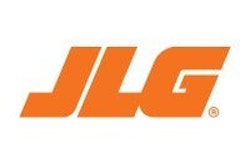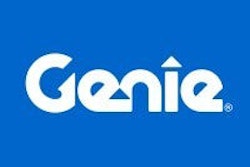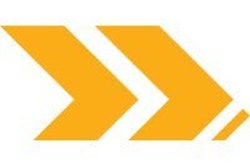
Despite the slump in residential construction and the threat of a slowdown in non-residential activity, aerial work platforms continue to be in high demand across North America. We asked a few leading manufacturers for their take on the future of this hot business segment and what it means to rental businesses. Included in the discussion were Chris Koch, general manager - North American operations at Haulotte Group, Howard I. Kaplan, vice president product parent for aerials with JLG, and Linda Mayer, vice president and general manager, global marketing and product management for Terex Aerial Work Platforms.
Q: How would you characterize the current demand for aerial work platforms?
A: (Koch -- Haulotte) In the North American market, the demand for small aerial work platforms has softened due to the downturn in the housing market. The commercial market for large AWPs remains active and should remain active through 2008. Therefore, demand for large AWPs ... should remain strong as well.?
(Kaplan -- JLG) The demand has been on the increase year over year since 2005.
(Mayer -- Terex) There is continued strong demand in the lift market in infrastructure construction, maintenance and repair applications. There is a direct correlation between improvements and growth in infrastructure and demand for lift products. Although residential construction is clearly declining, we are seeing growth elsewhere.
Q: Do you expect demand to increase, remain stable or decrease over the next couple of years?
A: (Kaplan -- JLG) We would expect to reach peak demand in early 2008 in North America. When we look worldwide, however, we see growing demand for at least the next few years, despite the possibility for some soft spots along the way.
(Mayer --- Terex) We expect to see minimal to moderate growth in North America and continued robust growth in Europe, Asia and Latin America.
(Koch -- Haulotte) We believe the demand for small AWPs for the total industry in North America will decrease over the next couple of years. Manufacturers who offer specialty products and offer options to their current products to meet the specific needs of the market will increase their market share. Haulotte is already developing new options to meet our worldwide market. The demand for large AWPs will increase due to the large commercial projects that are currently underway.
Q: What factors do you believe are affecting this demand?
A: (Mayer -- Terex) The factors driving demand differ based on the geographic region. In North America, the economy is still strong and certain segments are stronger than others and driving the growth - energy, transportation and mining.
In Europe, rental penetration is still low in some countries and consolidation within the channel is therefore driving regional growth. Plus, new markets, such as Eastern Europe, are opening up.
In Asia, the acceptance of rental as a channel and of aerial products is still relatively low, but we see evidence of a growing support for safety and therefore, aerial products.
In addition, with the fast pace of growth, the need for speed in construction is gaining ground. In Latin America, some countries, such as Brazil, are seeing strong growth in construction as well as a more stable economy. So, the factors driving demand vary greatly and are specific to the region, the local economy and the structure of the rental channel.
(Koch -- Haulotte) The market in North America is demanding more facilities for power generation, refineries and tar sands. In addition, other large projects in North America which include power plants, will continue at an accelerated pace for the foreseeable furture.
(Kaplan -- JLG) There is such strength in nonresidential construction on a global basis. Beyond that, we see growing use of access equipment in industrial, commercial and institutional applications; demand for used equipment; demand in emerging markets as an outlet for rental fleets; and a more stable rental segment than in the last peak.
Q: Can manufacturers keep up with the current demand for aerial work platforms?
A: (Koch -- Haulotte) The demand for large AWPs currently in the North American market is exceeding the manufacturers? ability to supply them in a timely manner. As a result, the backlog on large booms will remain strong through 2008. However, the demand for small AWPs will decrease slightly as this demand is directly impacted by the housing industry. ?The manufacturers that build products for the worldwide market and provide the options that the customers demand will increase their share at the expense of the other manufacturers that cannot or will not develop new products and options to meet the worldwide market. The overall demand in the North American market will be met by the manufacturers who provide value-added options which will meet the current and ongoing demands of this market.
(Kaplan -- JLG) Manufacturers are, in general, keeping up with the demand with exceptions in certain categories such as Ultra Booms that are undergoing more rapid growth.
(Mayer -- Terex) While I can't speak for other manufacturers, Genie is investing in the necessary capacity to meet the demands of our customers on a global basis. We have recently completed our strategic planning process to understand and focus on the major markets. A part of our annual planning process is to match our manufacturing capabilities with the demands of the market. We've worked hard to stay competitive and innovative, while maintaining our reputation as a customer first business. Our relationships are what matter, and they continue to be our strength.?
Q: With safety and training requirements continuing to get stiffer over time, how will this affect aerial work platforms as a rental item?
A: (Kaplan -- JLG) There is no question that training and safe operating procedures are integral to the use of access equipment, but that is the case with most types of equipment that rental companies provide. The opportunity is for rental companies to be integral to the process as the chief providers of hands-on training to ensure proper use of equipment.
(Mayer -- Terex) Absolutely, and for example, Genie has developed an online 'Train the Trainer' program for qualified AWP operators preparing to meet OSHA, ANSI/SIA and employer criteria for becoming an aerial work platform trainer. The course provides in-depth training on various presentation skills and tips for effective training. We will continue to look at innovative ways to add online safety and operator training courses on the proper use of equipment.
Aerial work platforms bring additional safety to the work place. Safety regulations increase the need for aerials.
(Koch -- Haulotte) Due to increasing productivity from the use of AWPs, combined with the increased safety features of these products, AWPs will remain a viable rental product for years to come. Moreover, the demand will increase due to the safety, versatility and productivity of these machines. We are also working to develop a training program for our customers to give them a plus in safety terms.
Q: What suggestions do you have to help rental companies maintain profitability with their aerial work platform fleet?
A: (Mayer - Terex) A component of profitability is to maintain high utilization rates at competitive prices, and 'uptime' is important in maintaining high utilization rates. Investing in a regular service program is a good idea to reduce downtime in the field. Also, investing in quality products with a good support network will also mean less downtime of equipment. Fleet age is a factor in terms of lowering the overall cost of operation and contributes to having product available to rent. Plus, the rental companies should always be looking for new applications to use the equipment.
(Koch -- Haulotte) The rental companies that choose manufacturers whose products have the least maintenance will be the most profitable. For example, products that have the simplicity of design, ease of maintenance, availability of parts and are coupled with on-going safety and service training will be the manufacturers of choice for the rental companies. By rental companies utilizing technology to better maintain their fleet, they ultimately increase the resale or trade-in value of their equipment. Thus, they ultimately increase their return on investment. Features such as GPS for maintenance, diagnostic computer testing equipment which keeps the machine running properly, and on-board diagnostic equipment will be the features of choice to increase machine utilization. Haulotte's emphasis on service and after-the-sale customer support continues to expand with our support facilities [across the country]. Rental companies will benefit from less downtime, making them more profitable.
(Kaplan -- JLG) Controlling life cycle costs is central to profitability for access equipment fleets. As a result, maintain the equipment regularly, including on-time PMs and repairs from customer damage; refresh your fleet on a regular basis; set rates so that the burden of ROI isn't on utilization; have your service technicians keep their knowledge current; and buy good equipment from reputable suppliers. And consider how you can get additional return on your original equipment investment by refurbishing your fleet as well as refreshing it.



















